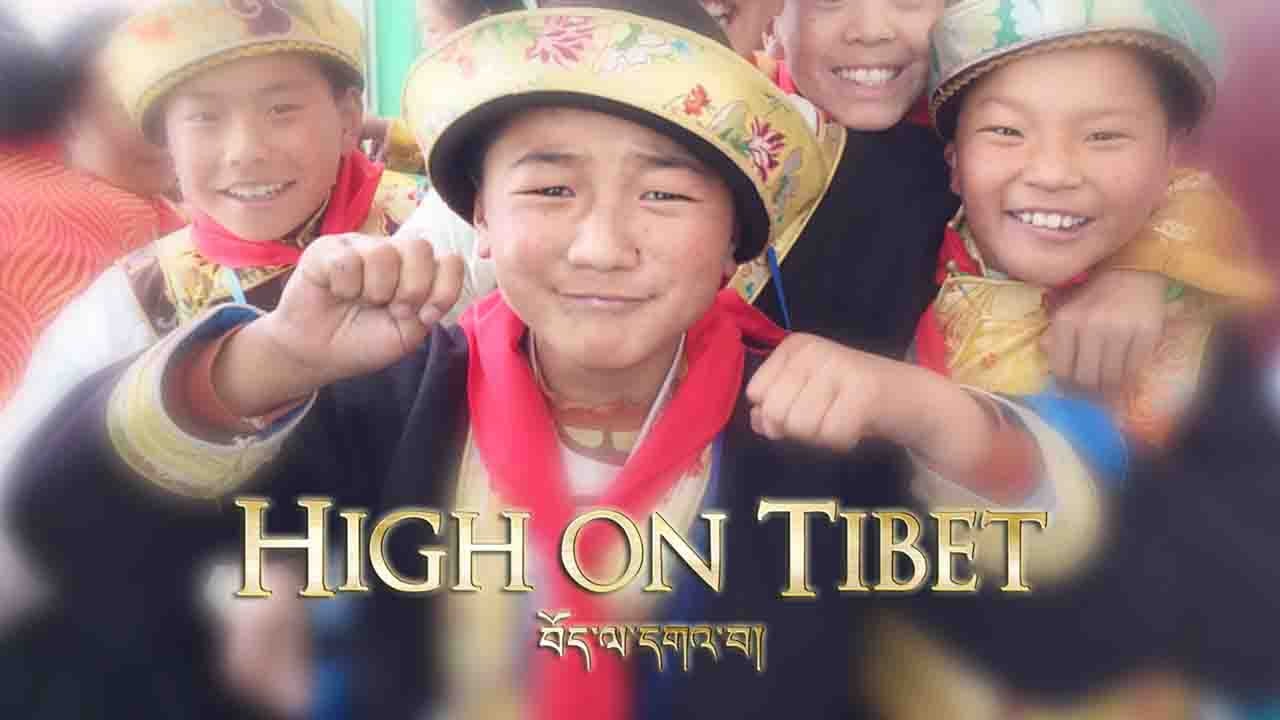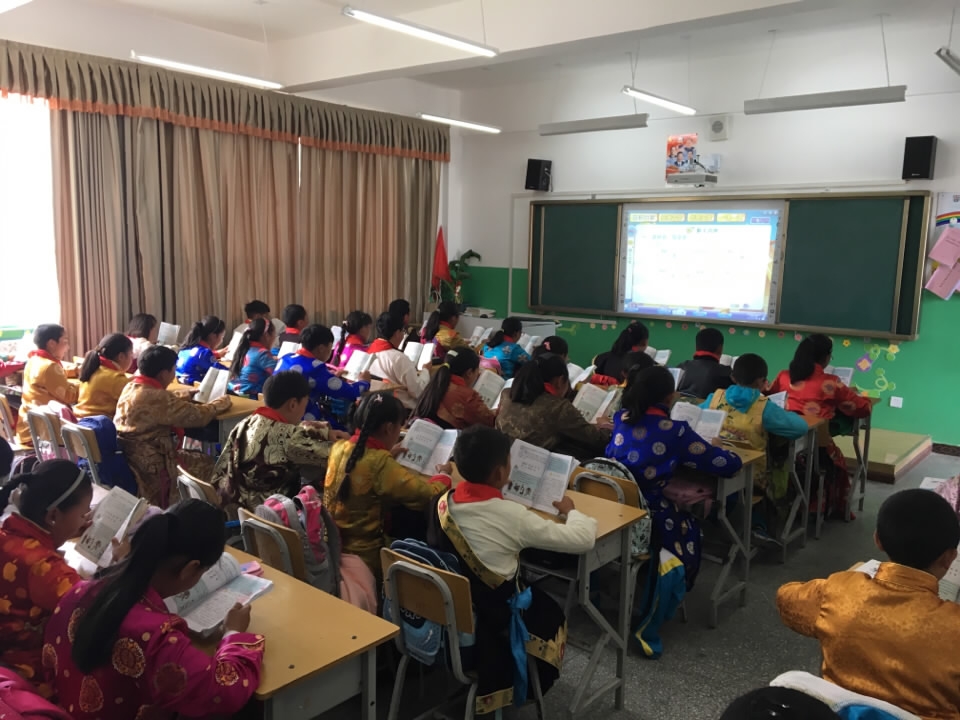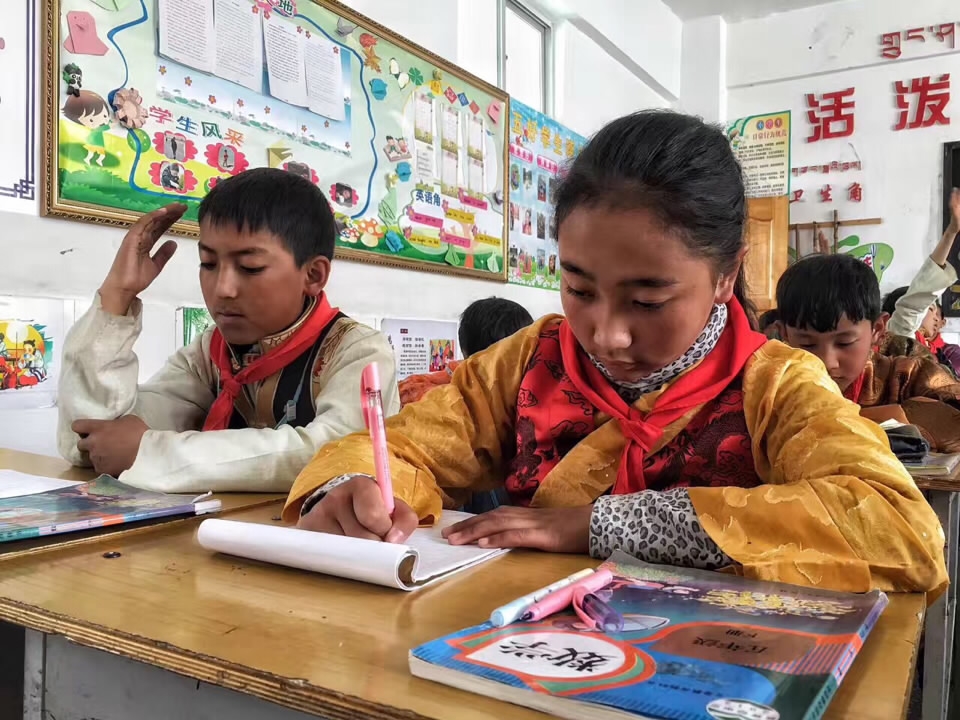High on Tibet: Bilingual education opening up new world

By CGTN's Jiang Shaoyi
Public signs are always the first cultural guidebook for a new man in town. Tibetan, Mandarin Chinese, and even English – a mixture of the old and the new and an attractive fusion of modernity and diversity.
This mysterious plateau was too big a draw for Mandarin teacher Zhou Dingfang to turn down. She moved to Tibet twelve years ago to fulfill, what she called, a "life-long career ambition." She had been working in Chongqing Municipality for more than a decade and she thought she could bring "well-developed teaching methods from inland China to Tibet, so that the kids here can receive a relatively better education.”

CGTN Photo
Zhou's school in Nyingchi has been employing bilingual teaching methods since 2008. More than half of the pupils there are ethnic Tibetan, the others are mainly ethnic Han. To preserve and grow the local tongue, the medium of instruction for ethnic Tibetan pupils is Tibetan, but they also take Standard Mandarin classes. Meanwhile, the school also provides ethnic Han pupils with the option of learning Tibetan.
About a decade ago, the Tibet Regional People's Congress decided to support bilingual education in the region's primary and junior middle schools. Now almost every pupil in Tibet is receiving bilingual teaching approaches – and such education is changing their lives, gradually and profoundly.
Mimarnorbu, 11, is one of the pupils in Zhou's class, and has been learning Mandarin for six years. For little Mimarnorbu, Mandarin is not only a subject, but a dream to hold on to. He said that Mandarin Chinese is his favorite subject, noting that when he grows up, he wants to go to Beijing to study at the Communication University of China. He said his dream is to become a TV host or a news broadcaster.

CGTN Photo
Mimarnorbu said he has been very interested in this career, ever since multimedia teaching methods were introduced. But his progressive teacher Zhou is still not satisfied by the development in education in Tibet.
Zhou said that the quality of education resources there, especially higher education resources, are still way behind that in eastern regions. She said she thinks learning Mandarin is the basis and key, as it allows the students to seek better personal development. "It can help them get more information and broaden their horizons. It’s very necessary."
Tibet is striving to eradicate poverty by 2020, and one way it's hoping to achieve that is through education. But with more advanced resources now pouring into the region, it’s not just about higher quality teaching methods or flashier textbooks, but the opening up of a whole new world outside, waiting to be researched and explored.
